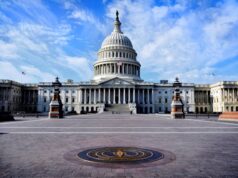The cryptocurrency world is abuzz as WisdomTree, a leading asset management firm, takes bold steps to broaden XRP’s institutional reach. Through a dual strategy of launching a physical XRP Exchange-Traded Product (ETP) in Europe and filing for a spot XRP Exchange-Traded Fund (ETF) in the United States, WisdomTree aims to cement XRP’s place in the growing portfolio of crypto-based financial instruments. These initiatives come at a pivotal time, with Ripple’s XRP recently surging to a three-year high of $1.60, spurred by a combination of market optimism and partial legal victories against the U.S. Securities and Exchange Commission (SEC).
However, these developments underscore a stark contrast between Europe’s welcoming regulatory framework and the complex, uncertain environment in the United States.
XRP’s Market Momentum and Institutional Demand
Ripple’s XRP has emerged as a focal point in the cryptocurrency market. Its recent price surge reflects heightened interest among both retail and institutional investors. Ripple’s legal battles with the SEC over whether XRP should be classified as a security have not deterred its adoption. Instead, they’ve highlighted the potential of XRP as a bridge currency for global financial transactions, solidifying its value proposition.
This market momentum has driven WisdomTree’s initiatives, starting with the launch of the WisdomTree Physical XRP ETP. Traded on leading European exchanges, including Deutsche Börse Xetra, SIX Swiss Exchange, and Euronext in Paris and Amsterdam, the ETP provides a cost-effective solution for investors. With a management fee of just 0.50%, it is currently one of the most affordable XRP-linked products in Europe. Fully backed by physical XRP holdings, the product aligns with European regulatory standards that encourage crypto asset innovation while maintaining investor protection.
The U.S. Regulatory Challenge
In contrast to Europe’s supportive environment, the U.S. regulatory landscape poses significant challenges. WisdomTree’s filing for a spot XRP ETF with a Delaware trust represents a calculated risk in an uncertain environment. The SEC’s history of delaying or denying crypto ETF applications, coupled with its ongoing litigation against Ripple, underscores the complexities of operating in the U.S. market.
Despite these challenges, WisdomTree’s move signals confidence in the potential for regulatory progress. Ripple’s partial courtroom successes, where XRP was deemed not a security for certain types of transactions, have shifted the narrative. Combined with growing political and institutional pressure for crypto regulation, there’s cautious optimism that the SEC might soon adopt a more accommodating stance toward crypto ETFs.
Europe’s Advantage: A Haven for Crypto Innovation
Europe’s regulatory clarity and proactive approach to crypto innovation have made it a preferred destination for launching digital asset products. The European Union’s Markets in Crypto-Assets (MiCA) regulation offers a framework that balances innovation with investor protection. It provides companies like WisdomTree the confidence to roll out products like the Physical XRP ETP.
This environment not only fosters institutional investment but also positions Europe as a leader in the crypto financial products market. WisdomTree’s ETP success in Europe could serve as a blueprint for future products, bridging the gap between traditional finance and the rapidly evolving digital asset ecosystem.
The Broader Implications of XRP’s Institutional Push
WisdomTree’s initiatives highlight a broader trend in the cryptocurrency market: the growing institutional appetite for diversification beyond Bitcoin and Ethereum. XRP’s unique utility as a payment and settlement asset makes it an attractive addition to portfolios, particularly in a landscape increasingly driven by regulatory clarity and investor demand for legitimacy.
While Europe continues to set the pace for crypto adoption, the U.S. must navigate its regulatory hurdles to remain competitive. WisdomTree’s dual approach reflects a strategic bid to position XRP as a leading institutional asset. It capitalizes on Europe’s openness while preparing for potential breakthroughs in the U.S.
>>> Read more: SIX Group to Launch Institutional Trading Platform in Europe
As XRP’s prominence grows and the demand for diversified crypto investment products rises, the question remains: will the U.S. catch up, or will it cede its leadership in financial innovation to Europe? WisdomTree’s journey might provide the answer.
Readers’ frequently asked questions
What is the difference between an ETP and an ETF, and why are both significant for XRP?
An Exchange-Traded Product (ETP) and an Exchange-Traded Fund (ETF) are both financial instruments that trade on stock exchanges. They provide investors with access to underlying assets like stocks, commodities, or cryptocurrencies. The key difference lies in their structure. ETPs, such as WisdomTree’s Physical XRP ETP, are typically backed directly by the asset they represent – in this case, XRP. This ensures that each ETP share corresponds to a specific amount of XRP held in reserve.
ETFs, on the other hand, are often structured to track the price of an asset or a basket of assets, sometimes without direct ownership of the underlying cryptocurrency. In the case of XRP, the ETF WisdomTree is proposing in the U.S. would allow investors to gain exposure to XRP’s price movements without needing to manage or hold XRP themselves. These products are significant because they offer a bridge for traditional investors into the crypto market, potentially driving wider adoption of XRP.
Why is the regulatory environment so different between Europe and the United States?
Europe has taken a proactive approach to regulating cryptocurrencies through frameworks like the Markets in Crypto-Assets (MiCA) regulation. This provides clear guidelines for companies looking to develop and launch crypto-related financial products, ensuring investor protection while fostering innovation. As a result, companies like WisdomTree can confidently launch products such as the Physical XRP ETP in European markets.
The U.S., however, lacks a unified regulatory framework for cryptocurrencies. Agencies like the Securities and Exchange Commission (SEC) and the Commodity Futures Trading Commission (CFTC) often overlap in their responsibilities. That leads to inconsistent rulings and prolonged uncertainty. This disparity is evident in the SEC’s ongoing legal battles with Ripple over XRP’s classification as a security. While Europe encourages growth in the crypto space, the U.S. remains cautious. It creates barriers for new financial products like the XRP ETF WisdomTree is pursuing.
How can an investor decide whether to invest in XRP through an ETP or directly?
Investing in an ETP like WisdomTree’s Physical XRP ETP offers convenience and security for those who may not want to manage XRP directly. With an ETP, investors avoid the need for digital wallets, private key management, or direct exposure to the risks of crypto exchanges. Instead, they can purchase shares of the ETP through traditional stock markets. It makes the asset accessible to those already familiar with standard investment practices.
Direct investment in XRP, however, allows for greater control over the asset. It enables holders to use it for transactions, staking, or other blockchain-related activities. Direct ownership might appeal to those interested in participating in the crypto ecosystem beyond simply profiting from price movements. The choice depends on an individual’s investment goals and their comfort level with managing cryptocurrency. ETPs cater to traditional investors seeking exposure, while direct ownership suits those looking for more involvement in the digital asset space.
What Is In It For You? Action Items You Might Want to Consider
Consider diversifying your portfolio with XRP exposure through institutional-grade products
If you’re looking to add XRP to your investment mix, explore options like WisdomTree’s Physical XRP ETP in Europe or keep an eye on developments in the U.S. regarding the XRP ETF. These products provide a streamlined way to gain exposure to XRP without the complexities of managing wallets or exchanges. They are an attractive option for traders seeking a secure and regulated approach.
Monitor regulatory updates in the U.S. for potential market shifts
The outcome of WisdomTree’s XRP ETF filing with the SEC could signal a broader shift in the U.S. regulatory environment for cryptocurrency products. Traders should stay informed on SEC rulings and Ripple’s legal proceedings. Positive developments could significantly impact XRP’s price and trading volumes. A favorable regulatory outcome might open doors for more institutional inflows, boosting XRP’s long-term prospects.
Leverage XRP’s current momentum strategically
With XRP reaching multi-year highs, short-term traders might find opportunities in the heightened volatility. Look for entry and exit points by analyzing market trends and volume spikes. For long-term investors, consider whether XRP’s utility as a bridge currency and the increasing institutional adoption aligns with your broader investment strategy. Timing your trades around major news or product launches, such as WisdomTree’s ETP, could maximize your returns.










